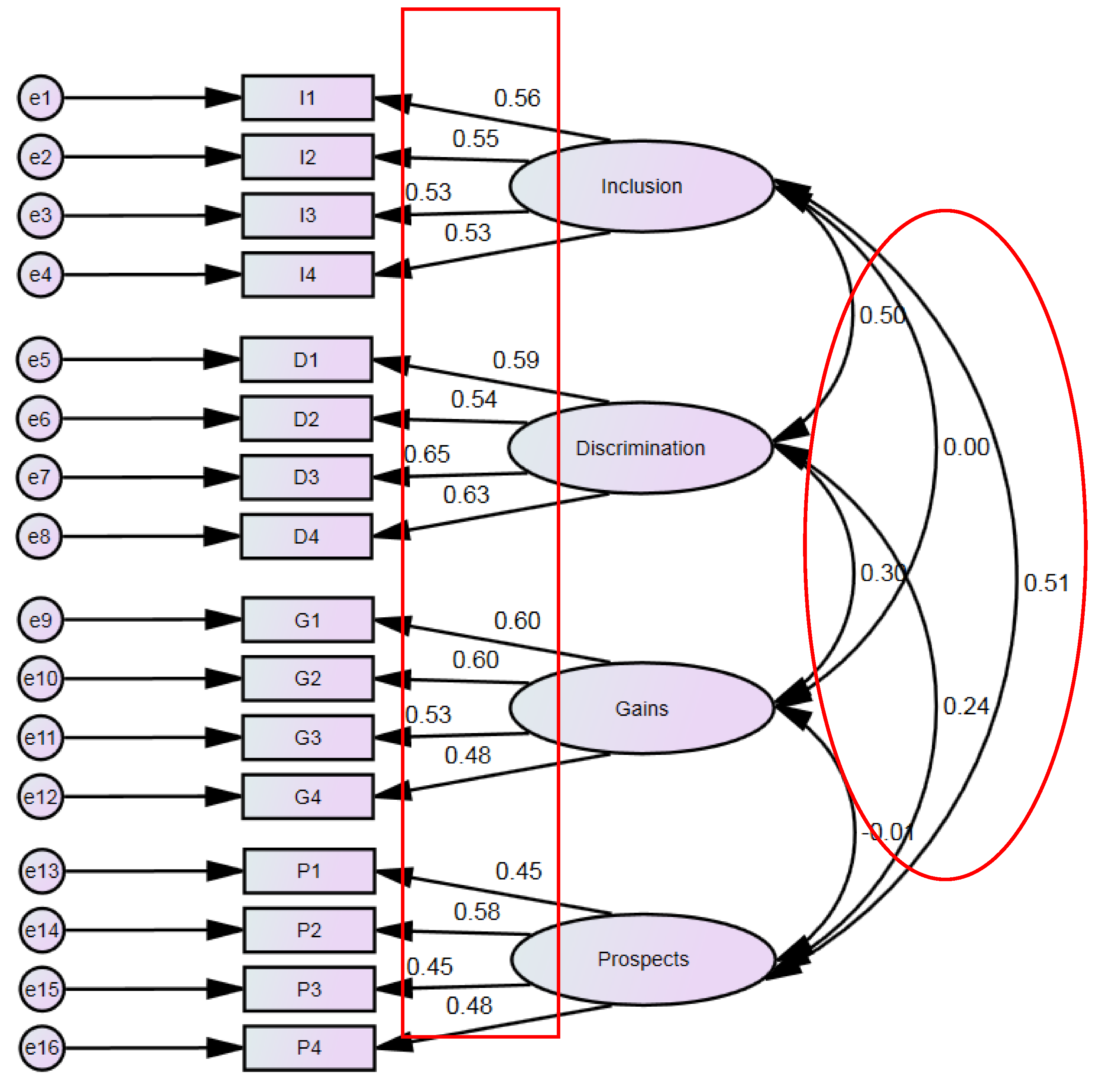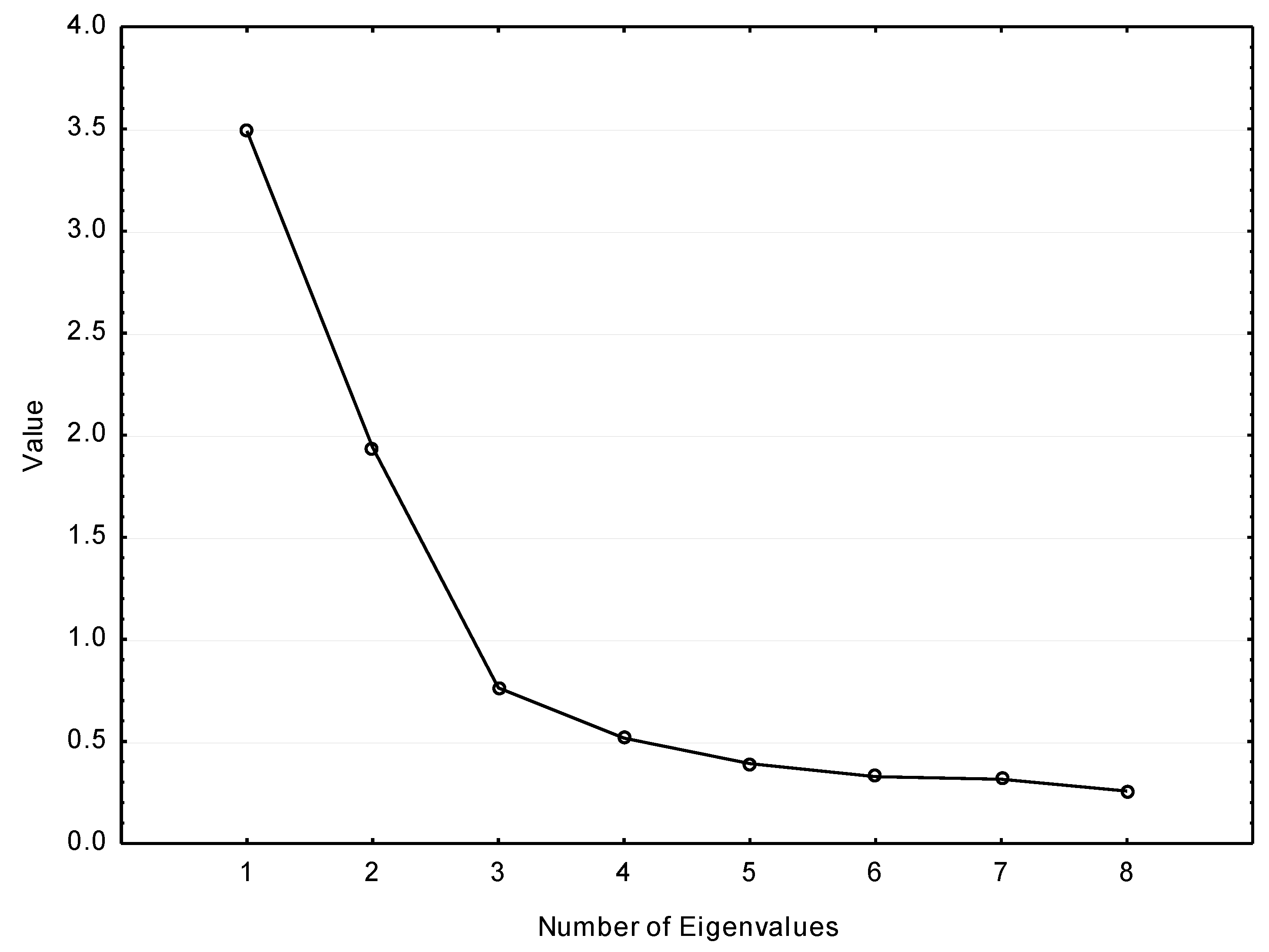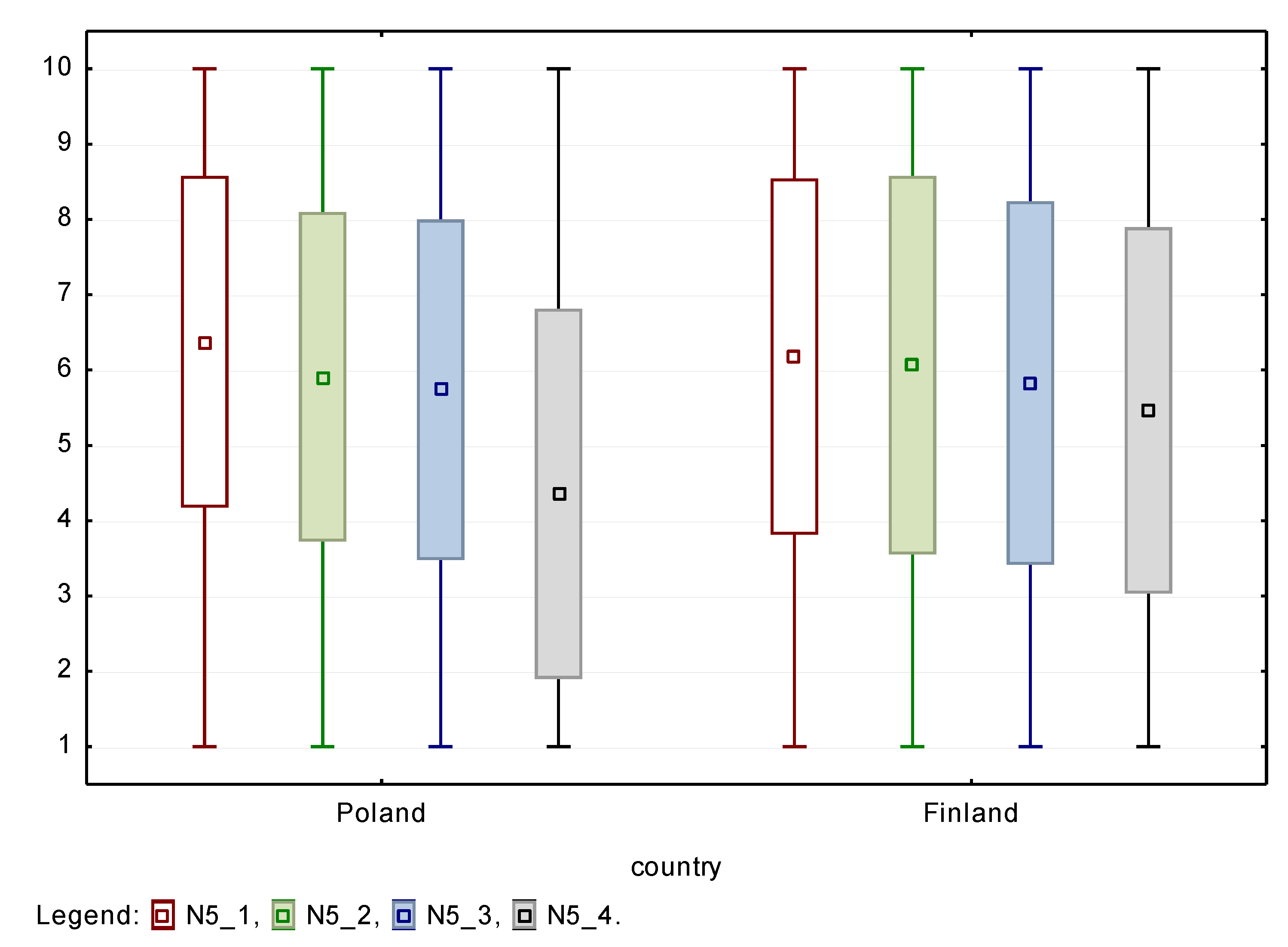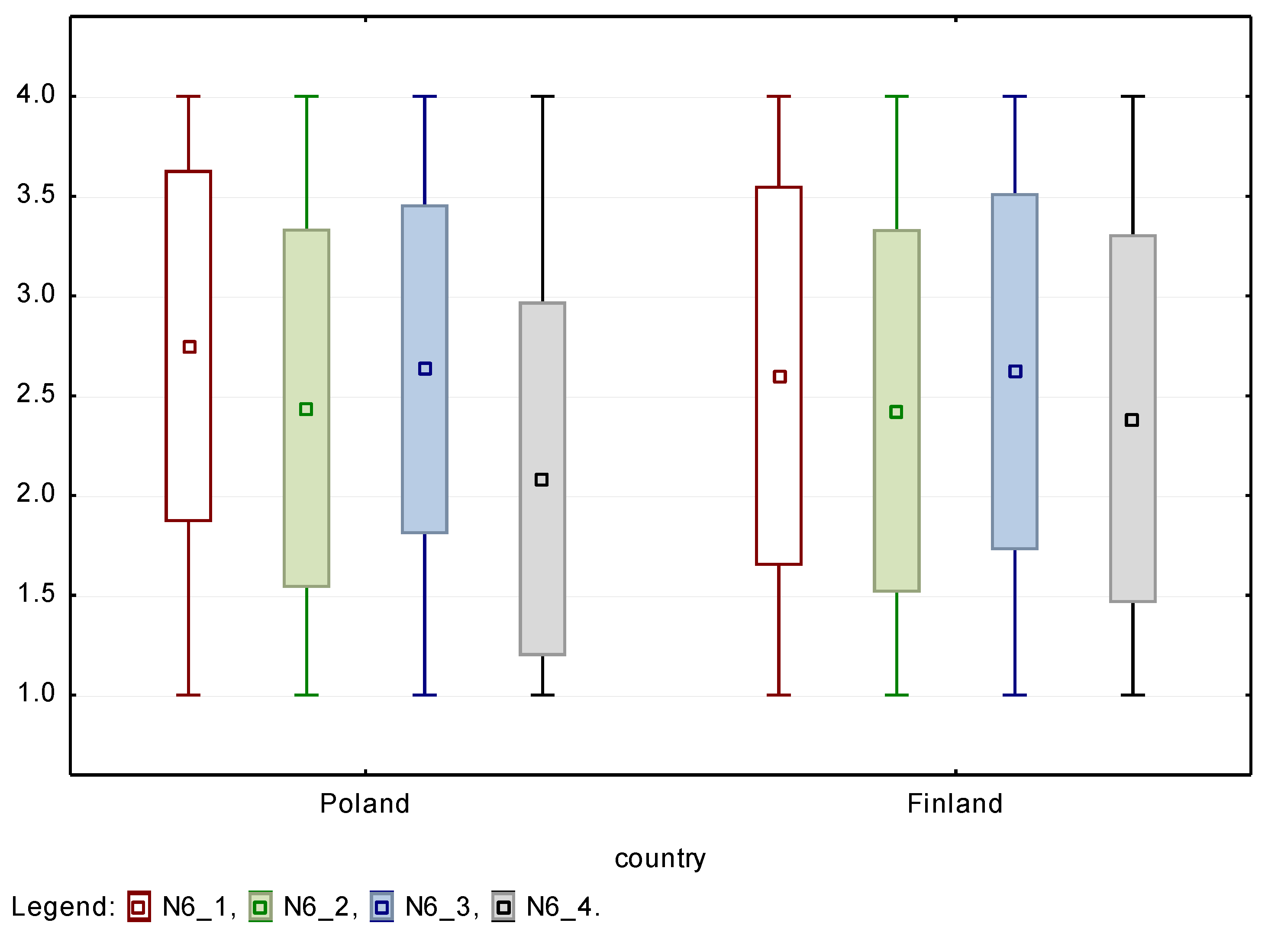1. Introduction
Increasing life expectancy, aging of societies and technological progress, especially in the field of medicine, make people with disabilities (PwD) constitute an ever larger group. According to data gathered by Eurostat, almost 25% of European Union citizens (24.7%) aged 16 and more are people with some or severe limitations [
1,
2]. In absolute figures, this is at least 110 million people. According to global estimates, the number of people with disabilities exceeds one billion, or 15% of the world’s population [
3,
4,
5]. From the legal point of view, these people are ensured normal functioning in society and equal access to workplaces. This has been stated in the most important international document guaranteeing full social inclusion, namely the Convention on the Rights of Persons with Disabilities adopted by the United Nations in 2006 [
6]. However, it is necessary to remember that equal treatment of people with disabilities is not a simple derivative of international law ratified by many countries. According to official data, in most European and world countries the employment rate for this group of people is much lower than for the remaining part of society and causes or consequences of this phenomenon are analysed in many studies [
7,
8,
9,
10,
11,
12,
13,
14]. The reason for this is, among others, the unfavorable social perception of people with disabilities as a consequence of fear and stigma, the source of which lies in insufficient awareness of the specificity of various types of disability. As shown by the results of research conducted by various teams, the main source of knowledge about disability is previous experience in cooperation with PwD [
15,
16,
17]. It can be observed that employers who have already employed PwD are more likely to decide to hire people from this group. Similarly, co-workers who have people with disabilities in their families or among friends are more open and more willing to accept them in the workplace [
18]. However, in the case of able-bodied people without prior personal contact with PwD, the key role in gaining knowledge about disability is played by popular culture texts in the press, radio, television, books etc. Unfortunately, the message that they convey does not show PwD in a favourable light [
18,
19]. Disability is presented as a constant struggle with adversities/handicap (with focus on “heroism”) or something that excludes people from society and makes them dependent on others (“weakness”). The image of a person with disability living a “normal” life, without prejudice or unnecessary overtones, is rare to see. Depicting PwD in such a way fosters social dislike towards this group, and it is the positive attitude of employers and able-bodied co-workers that is essential for a successful adaptation process for people with disabilities in the workplace [
20,
21].
In the context of successful professional activation, it is crucial to develop a universal and reliable tool to measure the perception of people with disabilities, both in everyday life and in the workplace. A review of those that are available shows that, although many instruments are already used, most of them have certain limitations, e.g., with regard to the dedicated target group [
15], and require further verification to broaden their scope of use. In the area of measurement tools, the work of the team led by M. Power (The World Health Organization Quality of Life Group—WHOQOL Group) on the development of the Attitudes to Disability Scale (ADS) test is particularly important [
22,
23,
24]. The ADS questionnaire asks about the respondent’s opinion on disability and disabled people in general. This tool contains 16 statements relating to the perception of the functioning of people with disabilities in society (detailed list of ADS items can be found in [
22]). They have been grouped into four main fields (factors): Inclusion (items 1–4), Discrimination (items 5–8), Gains (items 9–12), Prospects (items 13–16). Respondents express their opinions using a 5-point Likert scale, where “1” means “I completely disagree”, whereas “5” means “I completely agree”. The authors of the ADS scale obtained good results in terms of measurement reliability in groups of people who experienced disability, i.e., people with disabilities and people directly related to them. In 2020, the authors of the article, inspired by the results obtained by the WHOQOL Group, as part of international research on representative samples of respondents from eight European countries, also confirmed the possibility of using this tool to measure attitudes of the general public, and not only among people with experience of disability [
25]. The aim of the research was to test the resistance of this tool to the demographic and professional characteristics of the respondents. It should be noted, however, that the ADS scale measures only a declarative approach to the perception of disability, whereas differences between declarations and actual activity are usually significant, and not in favor of openness towards people with disabilities [
26]. Therefore, we decided to check the degree of acceptance of people with various types of disabilities in the workplace. In this study, we were interested in the degree of acceptance of various types of disability and the existence of possible differences between employers from two countries of the European Union: Poland and Finland. We decided to use questions from the proprietary questionnaire presented in
Table A1 in
Appendix A. Poland and Finland were selected on purpose due to different cultural determinants resulting in different social atmospheres and approaches to disability in the workplace. The choice was also influenced by various welfare state regimes existing in both countries.
Eventually, three research questions were formulated:
The first research question: Is the WHO measurement tool (the ADS scale) developed by the WHOQOL Group [
22] resistant to the demographic and professional characteristics of the respondents? In other words: Is the ADS scale the right tool to measure attitudes towards people with disability?
The second research question: Does openness towards people with disabilities (PwD) depend on the type of disability? In other words: Do people who declare openness towards e.g., people with reduced mobility, also declare openness towards other types of disability?
The third research question: Does the place where the company operates (country) differentiate the degree of acceptance of people with various types of disabilities in terms of their possible employment? In other words: Are the opinions of employers from different countries on the acceptance of, and willingness to employ, people with various types of disability similar?
4. Discussion
The confirmatory factor analysis confirmed the acceptance of the measurement model for the entire sample from the CATI research (Polish employers and employees). Both the values of factor structure elements and the model quality measures confirmed the adequacy of the measurement tool. A detailed comparative analysis of the ADS scale in terms of a set of demographic and professional characteristics using modelling and assuming group division was conducted with the use of nested models. We did not observe any significant differences in the models, estimated on the basis of the answers of all respondents, broken down by gender and by the role played in the workplace (employer/employee). In the employers’ sub-sample, it was possible to state the invariance of the model in terms of company’s size, while in relation to the sector, the results are close to significance level. In the sub-sample of employees, we verified invariance in terms of age and no differences in the values of factor loadings were found. The results of multiple-group analysis allow us to conclude that the measurement model is invariant in terms of the analysed demographic and professional characteristics, which indicates the adequacy of the WHOQOL scale as a tool for measuring attitudes towards PwD. This adequacy is also indicated by the works of other authors who used this scale for various studies in different contexts—Power and Green [
22] positively evaluated its psychometric properties, Zheng et al. [
38] used it to analyze differences in the attitudes of three groups (caregivers, PwD, public) taking into account socio-demographic characteristics, Palad et al. [
39] considered a Filipino version of the scale, Bredemeier et al. [
40] verified the properties of the Brazilian version, whereas Ma and Hsieh [
41] considered it as one of the questionnaires to study stigmatizing attitudes among healthcare students in Taiwan. Interestingly, the results are in contrast to the findings of other authors—Lyon and Houser [
42] stated a lack of reliability of the ADS scale for use with nurse educators, and Cantorani et al. [
43] pay attention to the fact that the scale has theoretical limitations connected with not taking into account important aspects—accessibility and autonomy.
The attitudes of respondents towards different types of disability were also compared by other researchers who came to a conclusion that openness does not really depend on the type of disability, although they did not show any analysis of correlation between attitudes and types of disability. Guzowski et al. [
44] studied the willingness to help people with nine different types of disability. Although there were differences between some types of disability, the authors identified the following as common factors contributing to a more open attitude of respondents: satisfaction with their lives and a high level of empathy. Huskin et al. [
45] studied attitudes towards 10 different types of disability and measured, as the main factor of openness, lower social distance scores across all types of contacts with persons with disabilities. This confirms the conclusion that people declaring openness towards PwD are open to various types of disability because of the influence of other personal characteristics on their general openness.
The conducted research has shown that the country in which the company operates differentiates between the degree of acceptance of various types of disability, mainly in the case of cognitive disability, which can be seen in the differences in the answers given by employers from Poland and Finland. This means that important factors shaping the perception of disability in a given community are cultural determinants. The obtained results confirm the previous findings of other authors. For example, research conducted among Israeli and Palestinian students [
46] treats the cultural conditioning of the perception of visual impairment, whereas research conducted in different US states [
47] deal with the different perception of employees with disabilities.
Unfortunately, the high acceptance of physical disability in Poland also confirms the fact that in post-communist countries disability is still associated with a person moving in a wheelchair, whereas other types of disability are hardly ever noticed. Moreover, public space is full of disability symbols depicting a person in a wheelchair, whereas “accessibility” is mainly perceived in terms of architectural solutions and lifts. This is confirmed by, among others, the results of semiotic and qualitative research [
18]. Meanwhile, the need to perceive diverse aspects related to disability has been underlined for years in international reports on this subject [
48].
Additionally, it is worth emphasizing that knowledge of disability possessed by employers is an important factor increasing their openness towards PwD which manifests itself in practical action, for example, employing people from this group. It seems that a positive perception of disability is conditioned by knowledge in this area, and the declaration of good or very good knowledge in this field is accompanied by more frequent employment of people with disability. The research results are consistent with the results obtained by other authors [
17,
49].
5. Conclusions
The analyses carried out on representative samples of employers and employees from Poland confirmed that the ADS scale is resistant to respondents’ characteristics. The constraint of the research involves making conclusions based on data from one country. In order to support the thesis about the resistance of the ADS test, it would be worth checking whether similar correlations can be observed in other countries.
The results of the research conducted among Polish and Finnish employers showed that openness and willingness to employ PwD can be reduced to summative scales, which means that it is possible to use an approach independent of the type of disability (high Cronbach’s alpha values for both analysed issues). However, more detailed analyses performed on respondents from the samples of Polish and Finnish employers proved that the use of summative scales causes a loss of important information, and, for example, the omission of significant differences in the perception of cognitive disability in both countries. According to the authors, this problem requires further in-depth research. For this purpose, it seems that it is worthwhile to analyze the differences between individual countries in the context of cultural dimensions that may have a significant influence on the perception of disability both in the social space and workplace. The limitation of the study is that it covers only two countries. It would be worth continuing research in other European countries, including those differing in terms of cultural dimensions or welfare state regimes.










